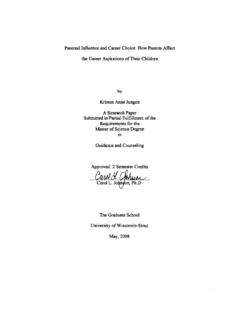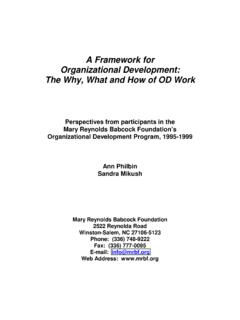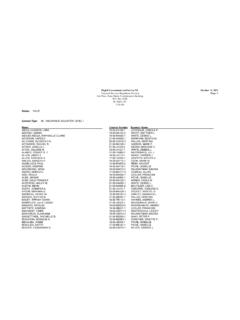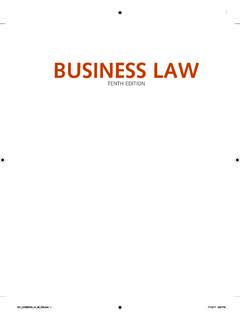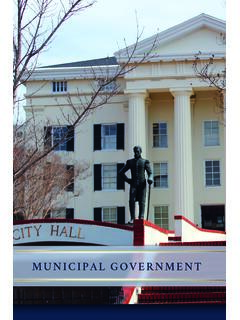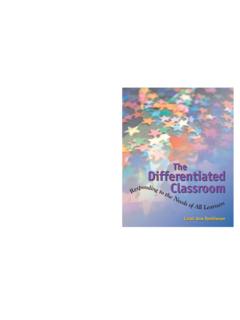Transcription of Lesson: Introduce the Elements of Biographies - ePals
1 Lesson: Introduce the Elements of Biographies Biographies have overlapping qualities of fiction and nonfiction texts. Similar to fiction, Biographies are meant to read like a story with a beginning, middle and end. They are about main characters whose life stories show struggle, conflict and resolution. Their lives often exhibit great achievements. As nonfiction, Biographies use different text structures such as a description, sequence, comparison, cause and effect, or problem and solution. They often have informational text features ( , headings, timelines, photographs and captions). Students will want to capitalize and extend upon their current understanding of character development and nonfiction as they read their Biographies . "So what then sets Biographies apart from other nonfiction?" you might be asking yourself. Biographies are about real people. The information is true!
2 While the stories of people's lives might read like fiction, their text features and organization all work to enhance the meaning and understanding of the character and setting. Don't let your students overlook Biographies ' nonfiction qualities! In this lesson, students listen to a read aloud of a biography and compare its characteristics to other familiar genres. They discuss why its Elements make it nonfiction, its similarities with fiction, and what sets it apart from other nonfiction books. Objectives (Key concepts, skills and knowledge) Understands the characteristics of Biographies Recognizes that Biographies often exhibit certain text features Learns that Biographies are a type of nonfiction Compares and contrasts Biographies to fiction and nonfiction Communicates ideas in writing Common Core State Standards Reading 5,6,9, 10 Writing 2, 9 , 10 Speaking and Listening 1 Evidence of Student Success Describes how a biography is different from previous genres studied Identifies text features Shares examples of Biographies Answers in writing What is a biography?
3 Recommended Read Alouds Molly Bannaky by Alice McGill Wilma Unlimited: How Wilma Rudolph Became the World s Fastest Woman by Kathleen Krull Teammates by Peter Golenbock Dear Benjamin Banneker by Andrea Davis Pinkney George Washington s Mother by Jean Fritz Young Orville and Wilbur Wright: First to Fly by Andrew Woods George Washington Carver by Andy carter and Carol Seller Diego Rivera: An Artist s Life by Sarah Vazquez Happy Birthday, Martin Luther King by Jean Marzollo Jacob Lawrence by Mike Venezia A Picture Book of Frederick Douglass by David A. Adler Frida Kahlo by Mike Venezia Harvesting Hope: The Story of Cesar Chavez by Peter Golenbock and Paul Bacon Preparation 1. Read Lesson . 2. Provide an assortment of Biographies and autobiographies for students to peruse. 3. Prepare a concept map. 4. Review the text features of biography.
4 5. Choose a biography read aloud to share. 6. Have chart paper and markers available. 1. Differentiate Genres 20 minutes Share with students that they are beginning the biography genre today. Although fiction and biography share characteristics, a biography is an informational text with many of the Elements learned from the social studies unit. As you read aloud a biography, ask them to pay attention to how the book is an example of nonfiction. Discuss After the read aloud, begin comparing the previous genres studies to the biography. How was it like fiction? What text features and Elements did it have that made it similar to the informational texts read during the social studies unit? The class will have more opportunity to examine and compare the genres in the next activity. 2. Compare Different Biographies 15 minutes For students who are new to Biographies , show them the read-aloud biography and other Biographies you have in your classroom.
5 Give them some time to look at the texts to see what they can discover about Biographies . Ask students to write in their Writer s Notebook the text features they see in their biography. Then ask them to exchange books with a partner and repeat the exercise. Have them compare notes to see if either of them identified characteristics the others hadn t. List Text Features After students have had some time to write and compare their observations with each other, discuss and list as a class text features they noticed among Biographies . Discuss why the author included the text features or wrote the book in the format they did. How do the features and format help them understand more about the person s life? 3. Discuss: What is a biography? 5 minutes Use a concept map (see below) to help students answer these questions: 1. What is a biography? 2. Can you think of some examples of Biographies that you know about or have read?
6 3. What are some important features of a biography? Help your students understand the differences and similarities between biography and the other two genres of fiction and nonfiction. Review with your students that genres help you characterize different types of books. Understanding the different characteristics of a genre will help them organize their thoughts to better comprehend what the book is about and why it was written. See below for a comparison diagram to help you and your students see the similarities and differences between fiction, informational texts, and Biographies . Using large chart paper, fill in a genre study chart for biography with students. Help students list the definition and characteristics of biography. Explain how biography has characteristics of both fiction and nonfiction, yet is situated within the nonfiction genre because it is comprised of factual information.
7 Here are some guiding questions: How would you describe fiction/nonfiction/biography? How do authors organize the text? What similarities do all fiction/nonfiction/ Biographies have? Where might you find this kind of writing? What fiction/nonfiction/biography texts have we read? GENRE STUDY CHART Fiction Nonfiction Definition The text is a story that didn't really happen or is make-believe. A text containing real or factual information. Characteristics A story with a beginning, middle, end, characters, plot, setting, problem, and solution A series of paragraphs with main ideas and supporting details. Text features- headings, subheading, bullets, bolded print, timelines, captions and photographs, charts, and sidebars (add other text features as you encounter and discuss them in text). Types Realistic Fiction, Historical Fiction, Folktales, Fairy Tales, Science Fiction, Fantasy Autobiographies, Biographies (See below.)
8 , Encyclopedia entries, Newspapers, Magazines, Journals, Textbooks Books we have read Something Beautiful Cool Crazy Crickets Chicken Sunday Wagon Train Journey of a Pioneer The Trail of Tears Biography Tells the life of real people. A factual account with illustrations, organizational features, photographs, lifelines, accuracy of facts, graphic features, setting, theme, and a structural pattern. (Leave this area blank- write in read-aloud titles and student books after you read each one.) 4. Write: What is a biography? 15 minutes In their writing journals, students take the time to answer the question What is a biography? . They should explain that it is an informational text about a real person. Oftentimes, there are text features such as a time line, photographs, a table of contents, and chapter headings. (An autobiography is a biography of the author writing about him or herself.)
9

